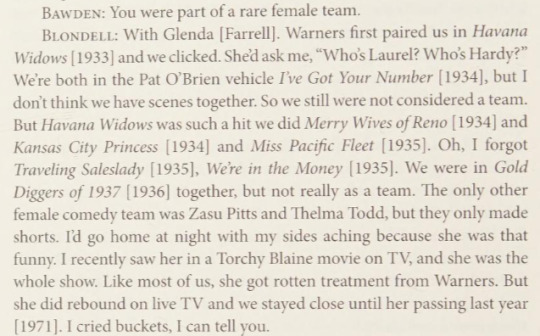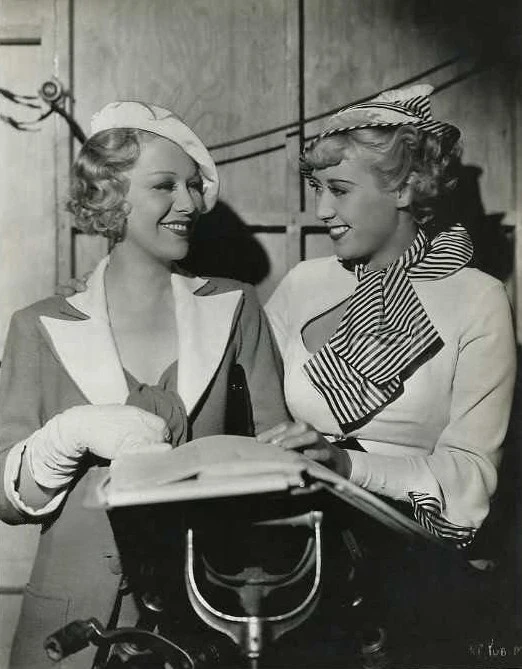#merry widow
Explore tagged Tumblr posts
Text

https://www.edgeobeyond.com/products/charlotte-en-or-basque
You're so golden ✨
34 notes
·
View notes
Text
The Corselette vs The Merry Widow
Step into the glamorous world of 1950s lingerie, where two enchanting creations, the Corselette (known as the Body Briefer in the US) and the Merry Widow, reign supreme. At first glance, they may appear similar, but don't be fooled - they each have their own distinctive allure and purpose.
The Corselette: Sculpting Elegance

Picture a fusion of a longline bra and a girdle, seamlessly woven into a single garment. The Corselette was designed to sculpt your silhouette, creating a flawlessly smooth canvas beneath those figure-hugging outfits. In its vintage form, it was a challenge to put on – a pull-on style with a low back, which often compromised the bra fit. But fear not, our modern version boasts a higher back and a convenient hook-and-eye front fastening, ensuring an impeccable fit without the struggles of yesteryears. To add a touch of allure, we've woven an internal elastic waist tape for a subtle cinch, avoiding the tube-like silhouette of vintage corselettes. A staple under both daytime and evening dresses, the Corselette was the secret to 1950s elegance.
The Merry Widow: Cinch and Support

In the enchanting world of 1950s fashion, the Merry Widow was the epitome of timeless glamour. It's more than just a strapless bra; it's a waist cincher too. These exquisite pieces were the perfect complement to evening dresses, often adorned with off-shoulder designs and tightly cinched waists, flowing into full skirts. While the vintage version featured a non-stretch waist tape, we've added a touch of modern comfort with elastic tape. Versatility reigns in our rendition – we've equipped it with detachable shoulder straps and made the suspenders removable. No more fumbling at the back with hook-and-eye fastenings; we've moved them to the front for ease and convenience. And, just like the original, we've faithfully maintained the classic spiral steel boning.
24 notes
·
View notes
Text
Fish keepers, and even the professionally written texts intended for consumption by aquarists, are prone to what philosophers call faulty generalization. Specifically I am now considering the livebearers, and the commonplace assertion, nowadays, that they require hard and alkaline waters in order to thrive. This fact makes these fishes appealing to people in areas with such a water supply, not least because such water is by nature more buffered against attempts to make it more soft and acidic, than is soft and acidic water when you want to make it harder and more alkaline.
In principle, a livebearer is any fish that does not spawn externally. But to aquarists it refers to 'livebearing toothcarp' or those cyprinodontoid fishes with such a life history. These fish are not a natural descent group, independent of those retaining the external spawning habit; which is to say, livebearing toothcarp' are polyphyletic. However the most common such toothcarp' in the aquarium are a natural or monophyletic group, among the poecilid subclade. Aquarists who do not have a special hobbyist interest in 'wild livebearers', are almost always referring to the mollies, guppies, platies, and swordtails.
Mollies in the wild are fishes of estuaries and even shallow seas, and in laboratory conditions, they grow better in brackish conditions than in freshwater, and not well at a low pH. Natural selection surely shapes the tolerances of wild molly populations, as in laboratory studies, shortfin mollies (Mollienisia sphenops complex, including the black molly) tolerate up to 8 ppt, and introduced mollies of this type, have colonised marine environments without further human assistance, in the Gulf of Thailand. Also laboratory studies indicate that the pH when keeping black mollies, a donesticated morph of shortfin molly, should not drop lower than 7.
The other popular mollies, the sailfin mollies (M. latipinna complex), are naturally present in marine environments in the wild, and experimentally tolerate salinities of even 70 ppt or above, and do best at 10 to. 25 ppt. The ecological preference of shortfin and sailfin mollies, for different levels of salinity, holds not only in their natural range, but also where both are introduced in the Gulf of Thailand. Shortfin mollies have colonised the inner waters of the Gulf of Thailand, where salinity is reduced, and sailfin mollies have colonised further. As with shortfin mollies, they breed and grow normally at a pH value above 7, and thus are not suitable for the softwater aquarium either.
Guppies (Lebistes reticulata) might be close evolutionary allies of the mollies, yet they are also very different animals, as they lack the special herbivorous and saltwater specializations of their molly kin. Guppies are adaptable fishes that do best at a pH that is circumneutral, and although they can tolerate slightly brackish environments, they are typically absent from them in their natural range, being thus limited to the 'interface' between fresh and brackish water conditions. Guppies actually can thrive in waters that are on the soft and acidic side, but only when the parameters are nicely close to neutral.
Still more distantly related are the platies and swordtails of the genus Xiphophorus (X. maculatus and X. helleri) that inhabit freshwaters upriver of estuaries. Although these fishes possess some physiological tolerance of low salinities, up to 10 ppt, they prefer different habitats than do tbe similarly sized mollies. Like them, however, they prefer a pH and hardness above those of our softwater aquariums. Both platies (X. maculatus complex) and swordtails (X. helleri complex) should be maintained at a pH value above 7.
The 'wild livebearers' as a whole, tend also to prefer circumneutral to hard and alkaline water, though some species are especially adaptable and tolerant. Among these are a few species popularly known as the mosquitofishes, although confusingly a number of species in different genera have been referred to by that name, sometimes even the guppy. Usually in aquaria, two species of Gambusia are indicated, either G. affinis or G. holbrooki. These species are easily confused, and the aquarium trade rarely recognizes the difference.
The adaptability of these species to variables of water parameters, has often made them very successful outside of their native range, once they have been introduced to new, suitable localities by the hand of man. Gambusia sp. may be found in waters with a pH as low as 5 and as high as 10, but usually it is at least 6. The temperature is usually 25 degrees, a good match for our tropical tanks, but they may be maintained between 15 and 30 degrees centigrade. Also, they are able to handle a salinity that is up to 16 ppt.
The overlapping appellation of millionsfish is also used for a number of livebearer species, including again the guppy. Another is the dusky millionsfish or caudo, Phalloceros caudimaculatus, further known as the speckled mosquitofish in fact, and also as the one-spot livebearer. Like Gambusia sp. this little toothcarp has established new populations far outside its natural range, assisted by its inherent and broad environmental tolerances, and human efforts to control biting mosquito populations. Based on the collection records that exist for P. caudimaculatus populations, they naturalise best where the temperature is 16-22 degrees centigrade, and the pH is 6.5 to 8.
From North America hails another small poecilids species, Heterandia formosa, known as the least killifish and midget livebearer, as well as the dwarf topminnow. The latter being a North American colloquialism referring to the killifishes. H. formosa inhabits the still waters of pools, and slow moving streams, in association with dense vegetation. The species is reported from localities with a pH of 4.5, but between 5 and 7.5 is probably better. This species feeds normally, when the temperature is between 11 and 32 degrees centigrade.
Some other livebearers may be obtained that will do fine at a pH lower than 7. Two species that may be found together in the same habitat, are the merry widow, Phallichthys amates, and the knife livebearer, Alfaro cultratus. Both species are naturally present where the pH may be as low as around 6.5. Both fishes inhabit slow-flowing streams, creeks, and other backwater to stagnant waters, around vegetation, and usually over a mud bottom. Knife livebearers have overlapping but different habitat requirements, than does the sympatric merry widow, as they are commonest in forest pools and small creeks, and also in river edge habitats.
#livebearers#pH#water parameters#poecilids#mollies#guppies#platies#swordtails#mosquitofishes#millionsfishes#knife livebearer#merry widow#Mollienisia sphenops complex#Lebistes reticulata#Xiphophorus helleri complex#Xiphophorus maculatus complex#Mollienisia latipinna complex#Gambusia affinis#Gambusia holbrooki#Phalloceros caudimaculatus#Heterandria formosa#Alfaro cultratus#Phallichthys amates
0 notes
Text











Pattern Review: 1950's Merry Widow Corset-Corselet by Historical Atelier
Remember last July when I was knee deep in bunny suit fever? Well when researching for interlining layers I found this cute pattern by Historial Atelier on etsy and just knew I needed to make it. The fabric pieces had been cut and sitting in a ziplock for over a year, but with the way it came out I would say it was worth the wait!
To address the obvious elephant in the room, my display form does not fit the garment. She is lacking in the bust and hip department severely. So major fabric buckles and wrinkles I ask that you take with a large grain of salt. I haven't had the time to pad out my form or the means to buy one pre-fab close to my size.
Construction:
The merry widow uses a combination of stretch and non-stretch mesh panels. As per recommendation I went a basic power mesh for the stretch panels and a corset mesh for the non-stretch. I also added an overlay of the cutest flocked heart mesh over the corset mesh. Everything was sewn with french seams and then channels created using corset boning casing in black. The cups were made with bra foam and stretch black satin, the interior seams zig-zag stitched and again covered with boning casing for a clean finish. Underbust wire was salvadged from an old bra that fit great but died in the great laundry war of 2018. The waist tape was just 1" wide red grosgrain ribbon but petersham would have be more suitable for something like this. And I used steel spring boning from my favorite supplier Bias Bespoke.
Pattern Thoughts:
Overall I really liked the cut and fit of the garment. There is no included allowance so it is up to the maker to decide construction seam of choice and in turn needed allowance. In that way I really appreciated the consideration for the sewist. Throughout the course of construction I had no real issue with pieces fitting or ease in the cups to bodice panels not lining up. However, I thought the written directions having you insert and close the boning channels prior to sewing in the cups and installing the underwire was more difficult than it needed to be so I did this step in reverse. The channels were sewn and one end closed when the but was assembled, then inserted bones and closed ends prior to finishing the raw edge in picot elastic. The waist tape was also a little stressful since having to fit the tape to my waistline and hand baste over the seams caused some bubbling. So finding the right tension without pulling on the stretch panels took a lot of time. Though I am not sure if that is entirely on the garment or due to ribbon choice, petersham would have laid more flush to the garment and I suspect would have made this step easier. The hemming process of adding picot elastic from stretch to non-stretch panels and back again was also a bit of a headache. You do need to pull slightly on the stretch panels to have them grip and remain taught over your form but not enough to wear it puckers. Finding this balance in tension and then matching it on both sides was difficult for me, but it turn out ok in the end. However, after turning it into itself and stitching one more time then cause the stretch panels to want to flip. So, after everything was done I did need to do a little herringbone hand stitching about 1" on either side of the boning channels of the stretch panels to stop this from happening. I am still not exactly sure why that was happening, if it's a consequence of what I thought was ideal tension or if I overstretch while top stitching. Maybe some secret 3rd thing ^^; The one big caveat I have with this pattern is unfortunately sizing. While this was a perfect fit for me, the actual size window is extremely narrow. If you don't fall within it the stretch panels can only accommodate so much. Heaven forbid you were a size 12+ then you are likely to need to re-draft the entire garment. However this critique isn't so much on the pattern drafter but on the circumstances around making such a pattern. The pattern seems to directly reference a Warners Cinch Bra from the 1950's so yes, sizing was very different and what they are able to replicate off of that base is a single sized pattern. And while yes, the average sewist can likely adjust torso length and minor width adjustments, this still leaves a lot of folks with a pattern they can't really use without a great deal of drafting amendments. In which case you would save money but simply drafting it from scratch yourself. Really, the sizing is my only issue with this pattern, and the drafter themself takes great care in mentioning it upfront and being very honest about it's limitations. Her recommended fabrics, construction notes, and sources I found to be easy to follow and very clear. If you fall within the provided pattern sizing and are looking to make a more approachable foundational garment or for fun lingerie piece I would absolutely recommend this pattern. I give this pattern a solid ★★★★☆
#my projects#Merry Widow#Pattern Review#it's long so I put the text under a cut#can you tell I have been enjoying my macro filter?
1 note
·
View note
Text
1925 silent version of “The Merry Widow”, starring John Gilbert and Mae Murray. But no Franz Lehar music, presumably.

1 note
·
View note
Text


FINALLY got to know minthara... no notes. life of the party
#minthara#baldurs gate 3#bg3#baldurs gate#my art#astarion didnt have a problem with the widow hearts it was just undersalted#i love her so much.... what a character. ride or die and evil thats a perfect soup to me#my comics#(looks up at the clock) GAH AND MERRY CHRISTMAS
2K notes
·
View notes
Text
Lady's Choice! (fragments)
57 notes
·
View notes
Video
tumblr
Charlotte is classic for a reason 🌹
#edge o beyond#luxury lingerie#british lingerie#made in uk#rose embroidery#embroidery#basque#merry widow#illusion tulle
97 notes
·
View notes
Text



die hard isn’t a christmas movie… or is it? 🤔
#MERRY CHRISTMAS#clintasha#natasha romanoff#clint barton#black widow#hawkeye#clintasha fanart#clintasha fan art#marvel fanart#mcu fanart#my art#die hard#gunsnarrows
361 notes
·
View notes
Text
The Merry Widow (1968) with Jeremy Brett
I've not been a lot on social media lately because of the complete takeover from US'ers (which - understandable, I'm worried and grieved too, but still there are other countries and issues and the way people often neglect to specify they're talking about the US and assume all their readers are in the US too is kind of obnoxious) so I've directed my very limited time and energy towards something which has given me a lot of joy in recent years and is often freely accessable too: old media. I'm making a valliant effort to actually finish Moby Dick and Les miserables and Raffles, I've read the first collection of Arsène Lupin, I'm trying to get into Hercule Poirot (not entirely convinced yet but we'll see), and last weekend I watched The Merry Window movie of 1968, starring Jeremy Brett. It is entirely on youtube here. Not in the best visual or auditory quality, sadly (it has not been remastered yet), but still very watchable.
I went into this without any knowledge of the story or rich history of this operette, only having heard a few fragments of the songs before. And I was so, so entertained throughout, even though I did not understand everything that was going on.
A summary of my prompt research: The Merry Window (Die Lustige Witwe) was composed by Austrian-Hungarian composer Franz Lehár and first performed on stage in 1905 in Wien, running a very succesful row of almost 500 live performances. It has since been adapted both on screen and stage often, even through this very day. The Metropolitian Opera has a comprehensive synopsis on the story on their website, but more fun is this comic.
The basic story goes as follows: the embassy of a small Balkan country (fictional, but likely to be inspired by Montenegro), situated in Paris, is thrown into merry chaos as they learn that a very rich widow originally from the same Balkan country also is residing in Paris. Shenagans and plotting occur to try and convince her to marry one of their countryman, so her sweet sweet money won't leave the country, which is in dire need of it. There's only a problem: the proposed candidate, a count played by Jeremy Brett, already knows the widow, and the two of them have a History. Avoidant behaviour, sassiness, misunderstandings and other delicious drama ensue.
I did not expect the amount of music and songs in this movie. I think 80% or 90% of the script is in song rather than dialogue. Entire performances are shown, during which the plot just stands still, and honestly? I loved it. Modern movies/shows often move too fast for my sluggish autistic brain to keep up with, and this languid tempo just worked well for me. The folk and, I imagine, quite scandalous can-can dances are a joy. I'm usually not that fond of the more classical technique of singing but I found the music here quite gorgeous, too, a delightful mix of classical sound with fun folk elements. Jeremy Brett's rich voice really stood out of me. You can listen to the entire soundtrack here.
Jeremy Brett is a treat to watch in his role as a bit of a playboy, avoiding responsiblities and commitment and feelings of heartbreak by dancing and drinking at a local nightclub each night instead. Not suprisingly for everyone who has seen him in Granada's Sherlock Holmes: he's really excellent at dramatic posing, lounging on surfaces not meant for that, and 'trying to look cool but actually besotted'. There's a lot of humour in the dialogue and performances of the entire cast, too. For example, there's an entire extramarital affair going on right under the nose of an antirely oblivious baron's nose, and it's pretty hilarious. Further example of some funny lines: "What have you been doing lately?" Absolutely nothing!" "Excellent!" Jeremy's rivalry with the widow (played by Mary Costa) is especially a lot of fun, both really sell that part. I really got quite emotional by the final "Love unspoken, faith unbroken..."
There's an interesting background of historical social context to this operette, too: widows in that time enjoyed an amount of financial freedom denied to either unmarried or married women, and watching high class men competing for a woman's money was, I suppose, a nice bit of social commentary. I also really enjoyed a song by a group of men all wondering what they have to offer women if it isn't money - a question, in my opinion, that may be asked more often. The widow using her relative freedom to protect another woman from scandal at the end was rather sweet, too. The story ends, of course, by not upsetting the status quo too much. But it's such a fun ride.
All in all, very much recommended.
34 notes
·
View notes
Text



Original Art - Lana Turner "Crystal Radek" Costume Sketch (1952)
Art by Helen Rose
The Merry Widow (MGM)
From ha.com...
Vintage original costume sketch accomplished in gouache on artist board measuring 15" x 22.25", featuring Turner in a black satin and lace outfit, looking into a mirror. Signed "Helen Rose" with approval initials at left and notes in pencil and red pencil at upper left. The verso retains stamped production form and approval form.
#Film#The Merry Widow#Lana Turner#Fashion#Helen Rose#Vintage#Art#Illustration#Design#MGM#Metro Goldwyn Mayer#Women Of Film#1952#1950s#50s
47 notes
·
View notes
Text
Joan Blondell & Glenda Farrell


#joan blondell#glenda farrell#james bawden#1930s#hollywood#old hollywood#classic hollywood#classic film#classic movies#studio system#havana widows#1933#pat o'brien#1934#i've got your number#merry wives of reno#kansas city princess#zasu pitts#thelma todd#torchy blaine#miss pacific fleet#travelling saleslady#we're in the money#gold diggers of 1937#1936#laurel and hardy
53 notes
·
View notes
Text

your decorating habits are unsafe at best, Kate Bishop
#im so glad i drew this a few weeks ago ive been so busy since ive been on break#merry christmas to those who celebrate hope you get all the presents you wanted#i got a desk for my room at home so i should be able to draw more! yippee!#anyways kate and yelena slay whats new#art#fanart#myart#marvel#hawkeye#kate bishop#kate bishop hawkeye#its fun and christmas and kate bishop#thats a fun tag from last year maybe thatll be the Christmas tag#yelena belova#black widow#yelena black widow#lucky the pizza dog#pizza dog
140 notes
·
View notes
Text






39 notes
·
View notes

